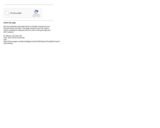
This is a handout I have used to help faculty identify and use Open Educational Resources.
- Subject:
- Education
- Material Type:
- Diagram/Illustration
- Author:
- David O. Smith
- Date Added:
- 02/02/2021

This is a handout I have used to help faculty identify and use Open Educational Resources.
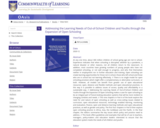
At any one time, about 300 million children of school going age are not in school. Experience indicates that when schooling is disrupted, whether by a pandemic, a natural disaster or other reasons, not all children return to the classroom. In addition, most countries have growing numbers of young people who have not completed schooling, or not well enough to progress, and who find themselves neither in employment nor in further education and training.
Open schooling can create learning opportunities for those not in school, those who left school and those who are in school but not learning effectively. There is no single model for open schooling provision which might offer a complementary or alternative curriculum, or both. However, all models can benefit from greater use of open educational resources; open, distance and flexible methods and open educational practices. In this way it is possible to address issues of access, quality and affordability in a sustainable way.
This book offers guidelines and examples that will be of use to teachers, managers, policy-makers and education leaders interested to ensure that the education system meets the needs of all children and youths.
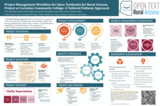
The Comprehensive OER Toolkit has been thoughtfully designed to empower educators and managers with the essential tools and guidance needed to effectively initiate, implement, and manage Open Educational Resources (OER) projects within their educational institutions. These resources have been carefully curated to facilitate a seamless workflow and streamline the processes associated with OER adoption.By offering this diverse array of resources, the Comprehensive OER Toolkit aims to equip educators and managers with a comprehensive suite of materials and templates to effectively manage the entire lifecycle of OER projects, from their inception to evaluation. Whether you are a novice or an experienced OER advocate, these resources can be customized and adapted to meet the specific needs of your institution, ultimately fostering a culture of open education and enhancing access to quality learning materials for all students.
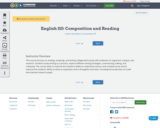
This course focuses on reading, analyzing, and writing college-level essays with emphasis on argument, analysis, and research. Students study writing as a process, explore different writing strategies, summarizing, editing, and critiquing. The course seeks to improve the student’s ability to understand serious and complex prose and to improve the student’s ability to write an exposition that is thoughtful and clear, including the production of a well-documented research paper.
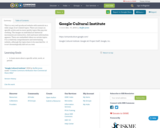
This is a very well-produced website with material on a wide range of art-related topics. There are essays on specific artists and on more quirky topics like pop star clothing. The images on individual art historical movements are interactive, click and more information appears. There are embedded videos on certain topics. It is a relatively comprehensive and entertaining website, although the topics have to be searched for - it is not chronologically laid out as a text.
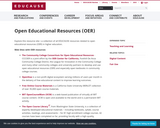
Open Educational Resources (OER) are teaching, learning, and research materials in any medium that reside in the public domain or that have been released under an open license that permits no-cost access, use, adaptation, and redistribution by others. OER confer significant dollar savings while also giving learners ready access to a wide range of high-quality, highly flexible educational materials. Open content offers faculty a means to customize curriculum to better align with learner needs and interests and to collaborate in new ways with peers worldwide.
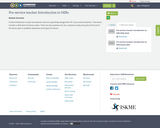
A brief introduction to open educational resources specifically designed for PK-12 pre-service teachers. This lesson includes a slide deck and lesson plans. There are also questions for pre- and post-survey (not quiz) at the end of the lesson plan to establish awareness and impact for lesson.